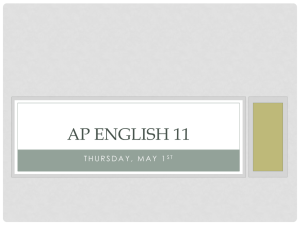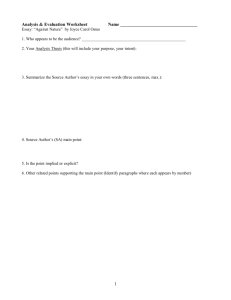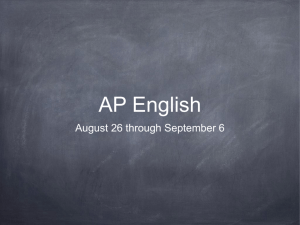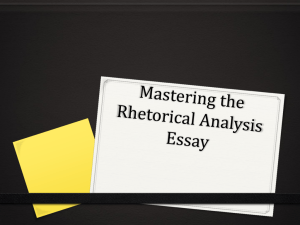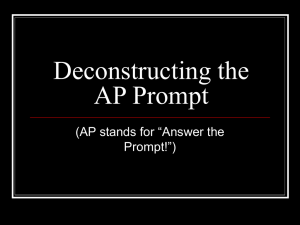Abstract and Concrete Tasks
advertisement
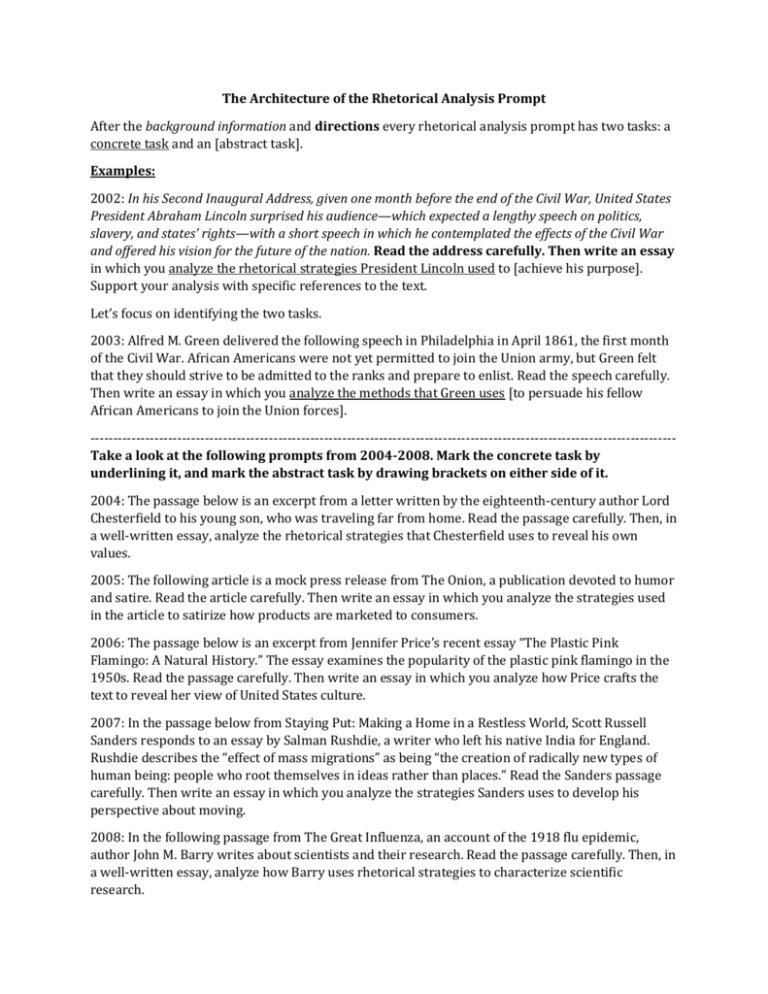
The Architecture of the Rhetorical Analysis Prompt After the background information and directions every rhetorical analysis prompt has two tasks: a concrete task and an [abstract task]. Examples: 2002: In his Second Inaugural Address, given one month before the end of the Civil War, United States President Abraham Lincoln surprised his audience—which expected a lengthy speech on politics, slavery, and states’ rights—with a short speech in which he contemplated the effects of the Civil War and offered his vision for the future of the nation. Read the address carefully. Then write an essay in which you analyze the rhetorical strategies President Lincoln used to [achieve his purpose]. Support your analysis with specific references to the text. Let’s focus on identifying the two tasks. 2003: Alfred M. Green delivered the following speech in Philadelphia in April 1861, the first month of the Civil War. African Americans were not yet permitted to join the Union army, but Green felt that they should strive to be admitted to the ranks and prepare to enlist. Read the speech carefully. Then write an essay in which you analyze the methods that Green uses [to persuade his fellow African Americans to join the Union forces]. -------------------------------------------------------------------------------------------------------------------------------Take a look at the following prompts from 2004-2008. Mark the concrete task by underlining it, and mark the abstract task by drawing brackets on either side of it. 2004: The passage below is an excerpt from a letter written by the eighteenth-century author Lord Chesterfield to his young son, who was traveling far from home. Read the passage carefully. Then, in a well-written essay, analyze the rhetorical strategies that Chesterfield uses to reveal his own values. 2005: The following article is a mock press release from The Onion, a publication devoted to humor and satire. Read the article carefully. Then write an essay in which you analyze the strategies used in the article to satirize how products are marketed to consumers. 2006: The passage below is an excerpt from Jennifer Price’s recent essay “The Plastic Pink Flamingo: A Natural History.” The essay examines the popularity of the plastic pink flamingo in the 1950s. Read the passage carefully. Then write an essay in which you analyze how Price crafts the text to reveal her view of United States culture. 2007: In the passage below from Staying Put: Making a Home in a Restless World, Scott Russell Sanders responds to an essay by Salman Rushdie, a writer who left his native India for England. Rushdie describes the “effect of mass migrations” as being “the creation of radically new types of human being: people who root themselves in ideas rather than places.” Read the Sanders passage carefully. Then write an essay in which you analyze the strategies Sanders uses to develop his perspective about moving. 2008: In the following passage from The Great Influenza, an account of the 1918 flu epidemic, author John M. Barry writes about scientists and their research. Read the passage carefully. Then, in a well-written essay, analyze how Barry uses rhetorical strategies to characterize scientific research.

